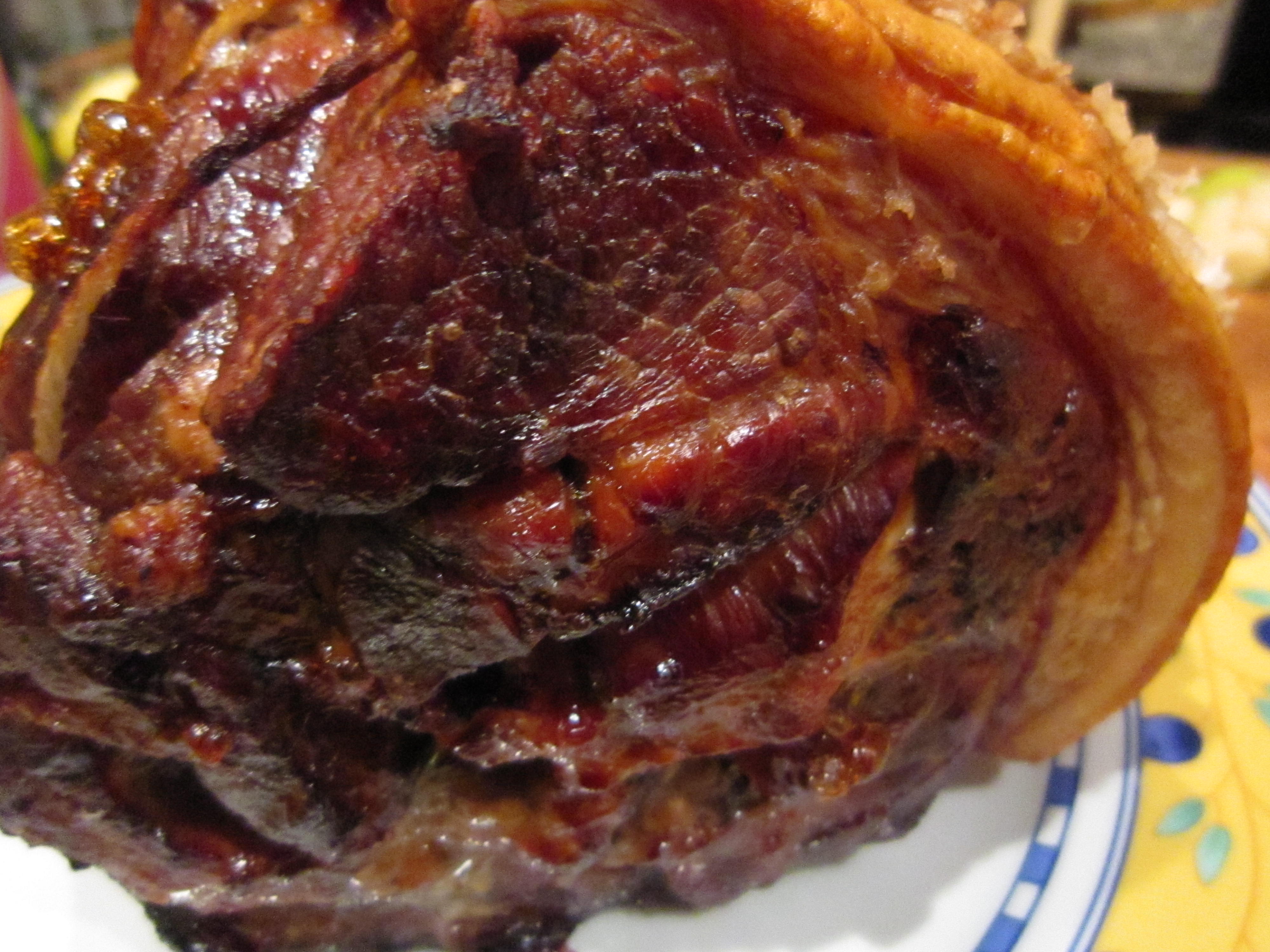Roast Pork Leg Crackling

Return Of The Roughnecks The Best Of The Chameleons Rar. A simple thyme, garlic, salt and pepper rub gives this roast a subtle flavour. Great served in the traditional way with apple sauce, roast potatoes and seasonal veg. And once you’ve enjoyed the roast pork use the leftover meat to make a quick salad, a main course noodle soup or a potato hash. • Preheat the oven to gas 4, 180 °C, fan 160 °C. Place the in a roasting tin and using a sharp knife, score across the skin of the joint. Combine the remaining ingredients in a small bowl. Rub the oil mixture all over the meat. Roast for 25 minutes and then reduce the oven temperature to gas 3, 170 °C, 150 °C fan and roast for 2-2 1/2 hours.
• If the crackling needs crisping up at the end of the cooking time, preheat the grill to high and brown the crackling for 5 minutes. When the meat is cooked, cover with foil and rest for at least 15 minutes then slice and serve with the crackling. Set aside the leftover meat until cool. Wrap in foil or place in a lidded airtight plastic box and store in the fridge. Use within 2 days. See more As part of a healthy balanced diet, we recommend this recipe for a special occasion or treat.
Score the pork leg using a sharp knife to cut through the skin to the meat in parallel lines, approximately 1 to 2cm apart. Place the meat in a large roasting tray and brush all over with olive oil, then rub all over with salt, working it into the cuts. Cook the pork for 30 minutes on the oven’s highest heat setting. If the pork is not pre-scored then using a sharp knife, gently score the skin of the leg across in close parallel lines. Make sure you cut all the way through the skin to the meat. Keeping in mind, the more scores you make the crispier the crackling.
For top tips on protecting you and your family when preparing raw meat and poultry, visit.
This recipe is for loin of pork which provides maximum crackling, but the butcher must chine it for you - that is, loosen the bone yet leave it attached, so that it can eventually be cut away to make carving easier. Wingate Proxy Server 7 Rapidshare Er there. How to get crisp, crunchy crackling is not a problem if you follow a few simple guidelines.
Buy the pork a couple of days before you need to cook it, remove any plastic wrap, put it on a plate immediately and dry it as thoroughly as possible with absorbent kitchen paper. After that, leave it uncovered in the lowest part of the fridge so that the skin can become as dry as possible before you start the cooking.You will find the recipe for roasted apples at the bottom of this page. While the oven is pre-heating, score the skin of the pork. It will be scored already, but it's always best to add a few more lines. To do this you can use the point of a very sharp paring knife, or Stanley knife, or you can now even buy a special scalpel from a good quality kitchen shop!
What you need to do is score the skin all over into thin strips, bringing the blade of the knife about halfway through the fat beneath the skin. Now place the pork in a tin, skin-side up, halve the onion and wedge the two pieces in slightly underneath the meat. Now take about 1 tablespoon of crushed salt crystals and sprinkle it evenly over the skin, pressing it in as much as you can. Systems Thinking Games.
Then place the pork on a high shelf in the oven and roast the joint for 25 minutes. After that turn the heat down to gas mark 5, 375 F (190 C) and calculate the cooking time, allowing 35 minutes to the pound. In this case it would be 21/2 hours. There's no need to baste pork as there's enough fat to keep the meat moist. The way to tell if the meat is cooked is to insert a skewer in the thickest part and the juices that run out should be absolutely clear without any trace of pinkness. When the pork is cooked, remove it from the oven and give it at least 30 minutes' resting time before carving. While that is happening, tilt the tin and spoon all the fat off, leaving only the juices.
The onion will probably be black and charred, which gives the gravy a lovely rich colour. Leave the onion in, then place the roasting tin over direct heat, turned to low, sprinkle in the flour and quickly work it into the juices with a wooden spoon.
Now turn the heat up to medium and gradually add the cider and the stock, this time using a balloon whisk until it comes up to simmering point and you have a smooth rich gravy. Taste and season with salt and pepper, then discard the onion and pour the gravy into a warmed serving jug. Serve the pork carved into slices, giving everyone some crackling and one roasted apple.